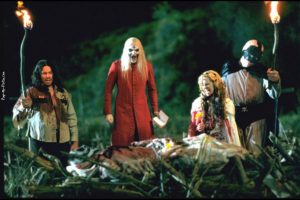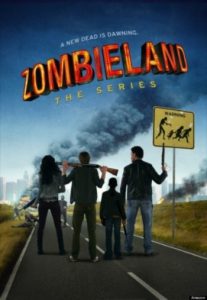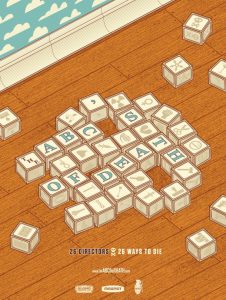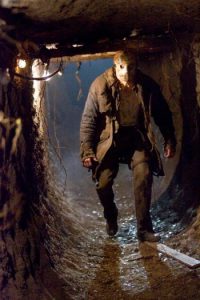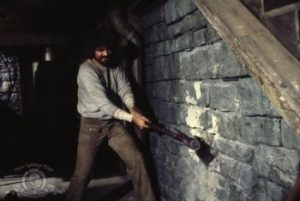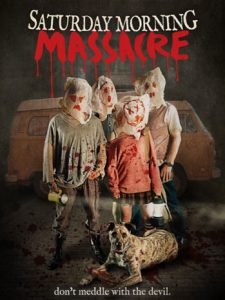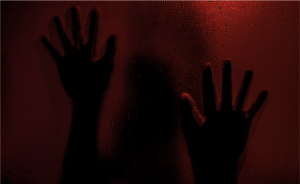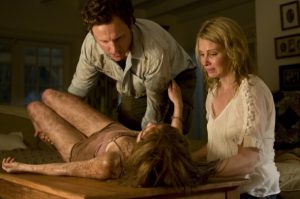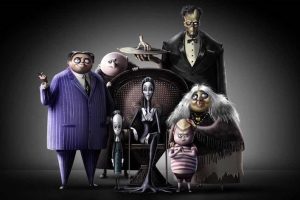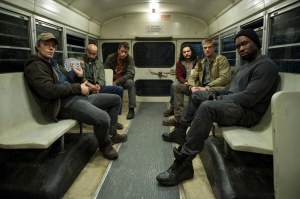Horror as a Progressive Force in Society
The recent debate in the UK over gay marriage has made me realize as a horror fan how different in my views I am to traditional, conservative society. Contrary to what a significant number of mainstream media and opinion will likely tell you however I strongly believe that I have the most socially positive outlook. Simply, I support gay marriage yet traditional, conservative and a significant number of those who would call themselves the most moral element of society doesn’t. I would like to emphasize I am not saying that every religious person shares these views but it can’t be denied that are currently present.
In one aspect I believe that this reflects the inherent confrontational and subversive nature of horror. In many instances, though admittedly not all it, ultimately forces us to confront issues – which I have highlighted in my previous editorials – we perhaps wouldn’t otherwise face and therefore at least allows the possibility for progress to be made. One such film I have reviewed recently is The Seasoning House (2012) which deals with the abuse and exploitation of woman in conflict zones in an unflinching manner.
Yet throughout the history of the horror genre we find that the institutions and representatives of traditional society have opposed it. Mussolini banned horror films during his rule (1932-1943), viewing them as a form of decadent subversion whilst his delusional aspirations to emulate Italy’s empirical past led him to undertake invasions of Abyssinia and Albania where several examples of appalling war crimes, including the Bombing of Graziani occurred. While the Video Nasty scandal ensued in Britain Thatcher also tried to emulate in her view Britons glorious Victorian past which required that Video Nasties be eradicated. Crucially both their overtly regressive stance stood in contrast to a medium that had a potential to reflect and highlight reality. As many critics noted in the 80′s the crusade to ban violent imagery from UK homes would surely have had to include new’s footage of the Falklands conflict if its instigators took it to its ultimate end. Therefore I would propose that banning a horror film is the equivalent of a society itself censoring criticism directed towards it or suppressing the roots of its problems. Both of these actions have a potential for severe consequences.
One of many subversive themes that horror has in contrast, confronted for much of its duration is sexuality. Published in 1872 Carmilla was one among many gothic novels released during the late 19th century yet distinct with its overt lesbian themes. Following this and after the advent of cinema several films involved to a certain degree a theme of lesbianism. One of the first was Dracula’s Daughter released in 1936, sequel to the classic Dracula (1931). Unfortunately censorship disallowed it from taking this theme to its original extent, forcing its female protagonist to turn her attention on the main male character rather than exploring the original script’s more explicit lesbian imagery. This was followed by many other similarly themed films such as Hammers The Vampire Lover’s (1970), Vampyros Lesbos (1971) and Daughters of Darkness (1971). Even without lesbian overtones however we can see many films with a strong and clever central female character including Simone Simon as Irena in Val Lewton’s The Cat People (1942), Gianna Maria Canale as Countess Grande in I Vampiri (1956) and Barbara Steele as Princess Vadja in Mario Bava’s Black Sunday (1960) – which was banned outright in the UK due to its violent content in some sequences. These and other films during the late 50′s were quickly followed by the second wave of feminist movement’s during the 1960′s where females emulated the strong characters in these films and fought as fiercely as their screen counterpart’s to gain fuller equality than what they had achieved during the initial wave of feminism during the late 19th and early 20th century. One can see these strong onscreen female characters as the very literal metaphor of female’s in society breaking out of their traditional domestic role.
As a medium horror cinema however was very much, and to an extent today still suffers from a biased majority perspective. In this aspect we can further identify a link to the suppressed position of women at this time and so it seems fitting that, upon analysis both areas have such a strong relationship. Yet despite the gains made by the feminist movement, progress in the area of homosexuality unfortunately did not parallel the ability of the horror genre to explore these issues as a result of collective society’s significantly more intense opposition and disgust at its concept. For homosexuals being discharged from the armed services after WW2 was followed by Eisenhower signing an executive order in 1953 that allowed any homosexual to be fired from their federal job. Law enforcement – the so-called public protectors – during the 1950′s also regularly detained and brutalized homosexuals while the FBI often undertook surveillance on them. In England meanwhile homosexuality was still a crime until 1967.
In contrast, within horror cinema during the late 70′s to the present in David Cronenberg and his son Brandon we have two directors who are unafraid to confront difficult issues related to health – including sexuality, viruses and mutation. In Romero we have also a director who was prepared to question consumerism, using the setting of the American Mall, at a time when there was, in the context of the Cold War, a dominating political view that mass consumerism represented an arsenal of weapons to defend democracy against communism.
Meanwhile, focusing on the 1980′s it is well covered that slasher films were criticised for perceived misogyny towards the sub genres female victims and while there are several films that may upon a brief analysis indicate this any fan of the genre will highlight the recurring element of the empowered Final Girl. Heather LagenKamp as Nancy perhaps epitomizes this most fully in one of the most iconic films of the decade, Nightmare On Elm Street (1984). In an interview with Dark Side magazine Heather tells Calum Waddell that she thinks some of those who are the most dedicated fans of the Elm Street films are gay men and woman who see them as inspiration for overcoming fear of outing themselves. Other fans have told her that they were a source of solace during challenging times during their lives. Nancy certainly was an inspirational character, perhaps one of the strongest since Ripley in Alien (1979). She actively fought back against Freddy Krueger using traps and in the films narrative confronting him aggressively during the finale. Furthermore we can see progress that as a character the audience will very likely sympathise with Nancy. This avoids the accusation attached to the female fiend films of the 50′s and 60′s by some critic’s that they, rather than symbolising independent strong female, represented the male element of society trying to slander their female counterpart as demons and witches due to their fear over their threatened dominance.
Though despite all this evidence however many people in society would most likely like to paint a significant amount of horror fans as possible reclusive psychopaths. Yet I would ask them, can you name me any other film genre that has the same number of conventions or festivals specific to it? For me this only shows how friendly and welcoming the vast majority of the horror community is. We are open to any religion, sex, creed or nationality. As long as you love horror as much as we do then I guarantee that the vast majority of the horror community will welcome you with open arms.
In contemporary films like The Descent (2005), Ginger Snaps (2000) and most recently American Mary (2012) these same themes re-occur. In the case of American Mary these take a particularly original form as its female protagonist Mary Mason subverts contemporary perceptions of sexuality itself. Like the female fiends of the 50′s before her she refuses to adhere to society’s rules and uses the concept of body modification to create her own.
Considering that only 16 percent of Conservative politicians in the UK parliament are female, and therefore the majority of those who voted against gay marriage were therefore most likely male, then perhaps its time that we let Mary Mason loose on those UK Conservative politicians who refuse to see the changing views of the majority of society.




![Best Indie Horror Films [ Part 2 ]](https://www.horror-movies.ca/wp-content/uploads/2021/04/absentia-610x343-2-300x169.jpg)
